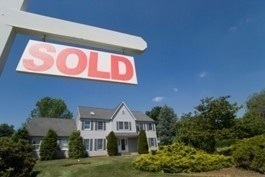 February existing-home sales declined from an upwardly revised January pace but are well above a year ago, while the median price posted a slight gain, according to the National Association of REALTORS®. Sales were up in the Midwest and South, offset by declines in the Northeast and West.
February existing-home sales declined from an upwardly revised January pace but are well above a year ago, while the median price posted a slight gain, according to the National Association of REALTORS®. Sales were up in the Midwest and South, offset by declines in the Northeast and West.
Total existing-home sales, which are completed transactions that include single-family homes, townhomes, condominiums and co-ops, slipped 0.9 percent to a seasonally adjusted annual rate of 4.59 million in February from an upwardly revised 4.63 million in January, but are 8.8 percent higher than the 4.22 million-unit level in February 2011.
Lawrence Yun, NAR chief economist, says underlying factors are much better compared to one year ago. “The market is trending up unevenly, with record high consumer buying power and sustained job gains giving buyers the confidence they need to get into the market,” he says. “Although relatively unusual, there will be rising demand for both rental space and homeownership this year. The great suppression in household formation during the past four years was unsustainable, and a pent-up demand could burst forth from the improving economy.”
According to Freddie Mac, the national average commitment rate for a 30-year, conventional, fixed-rate mortgage was a record low 3.89 percent in February, down from 3.92 percent in January; the rate was 4.95 percent in February 2011; recordkeeping began in 1971.
NAR President Moe Veissi says market conditions are improving. “Supply and demand have become more balanced in more markets, but with tight supply in the lower price ranges—particularly in the West,” he says. “When markets are balanced, we normally see prices rise one to two percentage points above the rate of inflation, but foreclosures and short sales are holding back median prices.”
The national median existing-home price for all housing types was $156,600 in February, up 0.3 percent from February 2011. Distressed homes—foreclosures and short sales sold at deep discounts—accounted for 34 percent of February sales (20 percent were foreclosures and 14 percent were short sales), down from 35 percent in January and 39 percent in February 2011.
“The bottom line is investors and first-time buyers are competing for bargain-priced properties in much of the country, with home prices showing signs of stabilizing in many areas,” Veissi says. “People realize that homeownership is an investment in their future. Given an apparent over-correction in most areas, over the long term home prices have nowhere to go but up.”
Total housing inventory at the end of February rose 4.3 percent to 2.43 million existing homes available for sale, which represents a 6.4-month supply4 at the current sales pace, up from a 6.0-month supply in January. Even so, unsold listed inventory has trended down from a record 4.04 million in July 2007, and is 19.3 percent below a year ago.
“Falling visible and shadow inventory, combined with a dearth of new-home and apartment construction during the past three years, assure that rents will continue to rise, with likely home price increases in 2012,” Yun says.
Fifty-one percent of NAR members report that contracts settled on time in February, 18 percent had delays and 31 percent experienced contract failures; the cancellation rate was 33 percent in January and 9 percent in February 2011. Contract failures are commonly caused by declined mortgage applications and failures in loan underwriting from appraisals coming in below the negotiated price.
“Many buyers are staying in the market after experiencing a contract failure and making an offer on another property, showing their determination to take advantage of the favorable conditions, but the cancellations are contributing to an uneven sales pattern,” Yun says.
All-cash sales rose to 33 percent of transactions in February from 31 percent in January; they were 33 percent in February 2011. Investors account for the bulk of cash transactions.
Investors purchased 23 percent of homes in February, unchanged from January; they were 20 percent in February 2011. First-time buyers accounted for 32 percent of transactions in February, down from 33 percent in January and 34 percent in February 2011.
Single-family home sales declined 1.0 percent to a seasonally adjusted annual rate of 4.06 million in February from 4.10 million in January, but are 9.4 percent higher than the 3.71 million-unit level a year ago. The median existing single-family home price was $157,100 in February, which is 0.1 percent above February 2011.
Existing condominium and co-op sales were unchanged at a seasonally adjusted annual rate of 530,000 in February and are 3.9 percent above the 510,000-unit pace in February 2011. The median existing condo price was $153,000 in February, up 1.6 percent from a year ago.
Regionally, existing-home sales in the Northeast fell 3.3 percent to an annual level of 580,000 in February but are 5.5 percent above a year ago. The median price in the Northeast was $225,800, down 1.9 percent from February 2011.
Existing-home sales in the Midwest rose 1.0 percent in February to a pace of 1.02 million and are 13.3 percent higher than February 2011. The median price in the Midwest was $120,500, which is 0.5 percent below a year ago.
In the South, existing-home sales increased 0.6 percent to an annual level of 1.77 million in February and are 9.3 percent higher than a year ago. The median price in the South was $138,100, up 1.8 percent from February 2011.
Existing-home sales in the West declined 3.2 percent to an annual pace of 1.22 million in February but are 6.1 percent above February 2011. The median price in the West was $195,300, up 3.1 percent from a year ago.
For more information, visit www.REALTOR.org.










